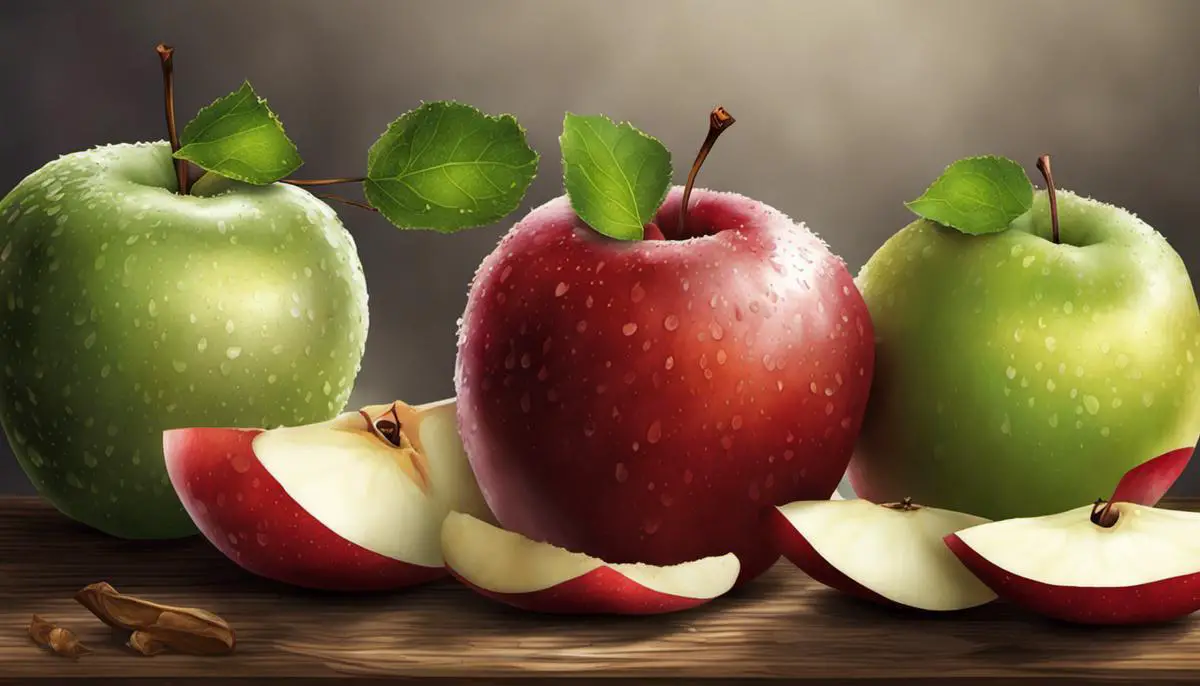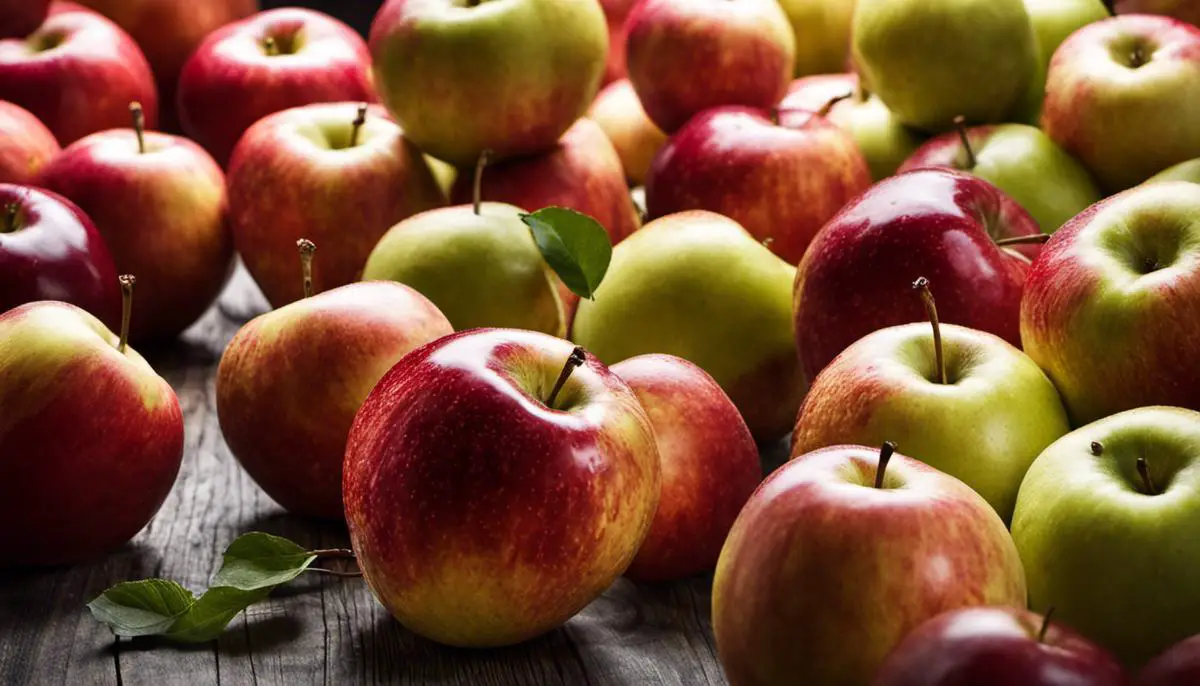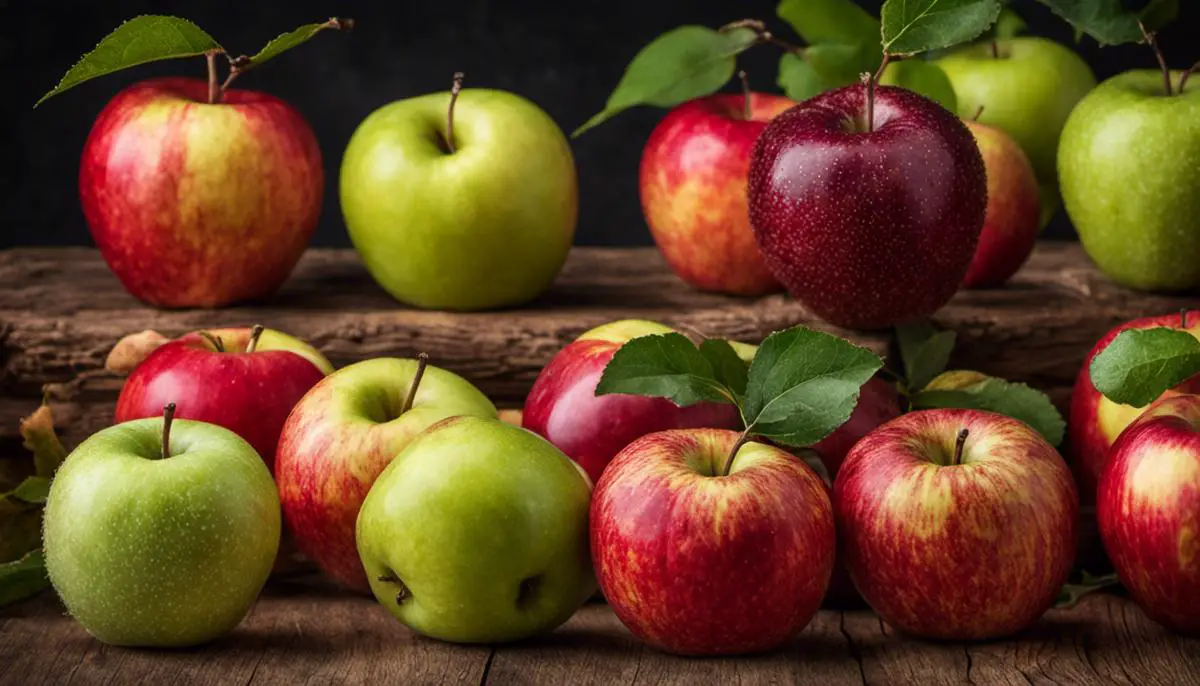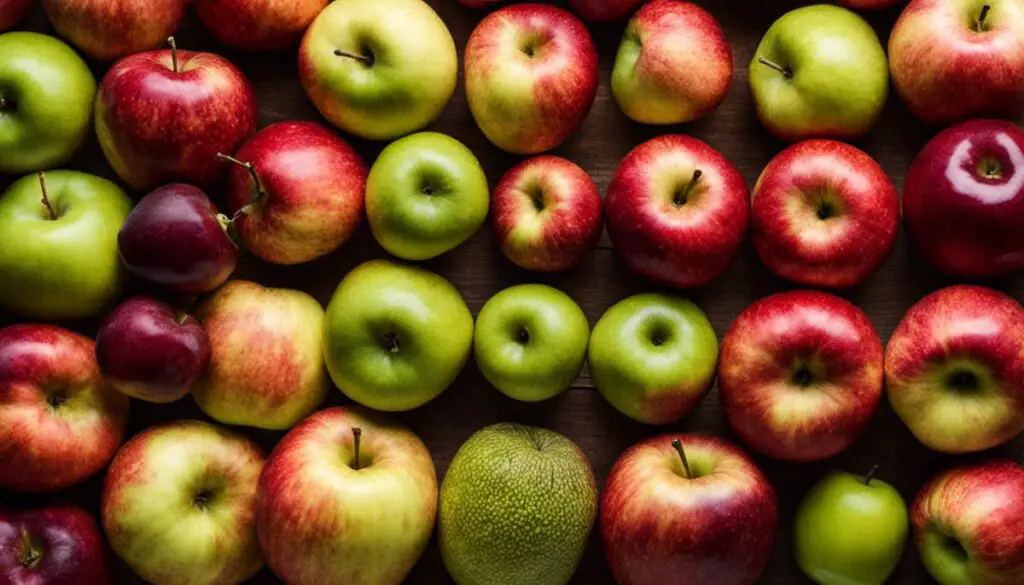As the quintessential fall fruit, apples offer a bounty of sensory experiences – the crispness, the sweetness, the tartness, and the variety of flavors. However, have you ever wondered whether the softer, mushy apples are even more flavorful? This discourse will take you on an enlightening exploration into the captivating world of apples, kicking off with understanding why apples can have different textures. Through examining the correlation between texture and flavor, you’ll delve into the intriguing question of whether the softness of an apple enhances the depth of its taste or hampers it. Our final pit stop on this informative journey will be a detailed scientific examination of the flavor profiles in mushy apples. Ready to embark on this exciting adventure? Let’s dive in.
Understanding the Textures of Apples
Understanding the Texture of Apples
Apples are remarkable fruits known for their crispness and wide array of flavors that varies depending on the cultivar. The texture of an apple is determined by the presence of cells known as parenchyma cells. These cells are filled with air, enabling the fruit to have a crunchy and crisp texture when the apple is fresh and ripe. The texture of an apple can change significantly due to factors such as variety, ripeness, and storage conditions which can cause apples to become mushy.
Why Do Apples Turn Mushy?
As apples ripen, the pectin holding the parenchyma cells together starts to break down, resulting in a softer apple texture. During this process, the fruit releases ethylene gas which accelerates ripening and ultimately leads to a softer, mushier structure. Apples also lose moisture over time, causing them to become softer. The conditions in which apples are stored, such as temperature and humidity, can greatly affect ripening and softening. Hence, improperly stored apples or overly ripe ones often exhibit this mushy texture.
Flavor and Mushiness
While some people may associate the term “mushy” with a decayed or unpleasant state, a mushier apple does not necessarily indicate a decrease in flavor. In fact, as apples ripen and become softer, they often develop a sweeter and more robust flavor. This is because the starches in the fruit convert into sugars during the ripening process, enhancing the sweetness of the apple.
However, the perception of flavor is subjective and can also be influenced by texture preference and freshness perception. Some people enjoy the crispness of a fresh apple and interpret that sensation as tastier, while others enjoy the deep flavor profile often found in softer apples. This means while mushy apples might be more flavorful to some, not everyone may share the same sentiment.
Understanding Different Apple Varieties
Did you know that the globe is home to an impressive 7,500 apple varieties, each possessing their unique flavor and texture profile? To illustrate, while a Red Delicious apple maintains a firm texture and gentle sweetness upon ripening, a McIntosh apple develops a tender quality with a tart touch. Similarly, the Fujis remain delightfully crunchy, even at peak ripeness, encompassing a rich sweetness. Gaining an awareness of these varieties enhances your ability to pick apples that align with your flavor and texture preferences.

Correlation between Texture and Flavor in Apples
Dissecting the Relationship Between Texture and Flavor
Although texture and flavor are vital aspects of the apple experience, it’s a common misunderstanding to think that a mushy texture corresponds to heightened sweetness or enhanced flavor. The increased mushiness is often a result of pectin (a type of fiber found in fruits) breaking down as the apple over ripens, which isn’t directly linked to heightened sweetness.
Various elements, including sugar content, acidity, and aromatic compounds such as esters and alcohols, determine the flavor profiles in apples. Interestingly, ethylene, a fruit ripening hormone, plays a significant role in making an apple mushy. As the fruit matures, it produces ethylene, which can cause the production of enzymes that break down the cell walls and destabilize the apple structure. This entire process is responsible for the soft texture in overly ripe apples.
Sweetness and Apple Ripening
The sweetness in an apple comes from the sugars it develops during the photosynthesis process. As an apple matures, starches within the fruit are converted into sugars, increasing the overall perceived sweetness. When an apple is at its ripest and intended texture, it has the ideal balance of sweetness and acidity, producing a rich, full-bodied flavor. However, as the apple over-ripens and starts becoming mushy, although the sweetness might slightly increase due to further conversion of starches into sugar, the balance between sweetness and acidity might get disturbed, leading to a less desirable taste.
Mushy Apples and Flavor Development
When the texture of the apple becomes mushy, it might impact the overall tasting experience. As apples become overripe and mushy, they lose their crispness, which often contributes to the pleasure of eating an apple. Moreover, certain aromatic compounds might be released or lost during the ripening process, altering the apple’s flavor profile. Interestingly, some people might find the increased sugar content in mushy apples appealing while others might view it as overly sweet and unappetizing.
Limited Storage and Shelf Life
A major concern with mushy apples is their limited shelf life. As apples become overly ripe and mushy, they are more prone to spoilage. The breakdown of structural integrity might also speed up the process of decay, significantly reducing the apple’s storage and shelf life.
Individual Preferences and the Role of Taste
It’s crucial to understand that taste and texture preferences vary significantly among individuals. Some might find the crunch of a fresh, crisp apple delightful, while others might enjoy a softer, more yielding texture. Essentially, the way a person perceives the flavor of an apple relies heavily on their individual sense of taste.
Interestingly, mushier apples are often the preferred choice in certain cooking processes or recipes. Their softer texture and subtle flavor can meld beautifully in cooked dishes. For example, recipes for apple butter or applesauce typically call for overripe, softer apples offering a desirable consistency.

Scientific Examination of Flavors in Mushy Apples
The Impact of Apple’s Texture on Flavor Perception
The texture of an apple significantly influences its perceived flavor. When people describe an apple as ‘mushy’, they’re usually referring to an overripe or older apple that has lost its firmness. This results in a softer texture, which may not be appealing to everyone and can drastically alter the overall flavor experience.
Impact of Ripeness on Flavor
Ripeness significantly impacts an apple’s flavor. As an apple ripens, it undergoes enzymatic transformations that break down complex molecules into simpler ones. In turn, this process releases more flavors. When an apple becomes mushy, it usually indicates it is highly ripe or overripe. Chemically speaking, it means more enzymes have broken down cell walls and released significantly higher amounts of flavor compounds, potentially making it taste more ‘flavorful’.
Scientific Study on Apple Texture
A study in the Journal of Agricultural and Food Chemistry examined the link between the texture of apples and perception of flavor. Scientists found that softer apple varieties appear sweeter and less tart than firmer ones, even when their chemical compositions are the same. They concluded that texture alone can influence perceived taste, suggesting that mushy apples might indeed taste more intense.
Role of Sugar Content
Riper apples, which are more prone to becoming mushy, usually have higher sugar content, which can make them taste sweeter. As an apple ages, the starch content decreases, and the sugar content increases, enhancing the fruit’s sweetness.
Sensory Perception of Apple Flavor
However, whether a mushy apple tastes more flavorful is ultimately subjective, based on individual preference. Some people may not enjoy the soft, mushy texture and find that it takes away from their overall eating experience, despite any increased sweetness.
Storage & Handling Impact on Flavor
Mushy apples are often the result of improper storage or handling. Extended exposure to warm temperatures, for instance, can cause the apples to ripen — and thus soften — faster. While these overly soft apples might potentially pack more flavor, they can also develop off-flavors or become mealy, lessening their appeal.
In conclusion
While mushy apples may possess more pronounced flavors due to the advanced stages of ripening, the appeal of these flavors is largely dependent on individual tastes and preferences.

After exploring this realm of apple textures and flavors, it becomes apparent that the notion of mushiness in apples correlating to flavor is both a science and an art. Subtleties in texture can dramatically enhance or inhibit the flavor experience, as our analysis of texture and its relationship to taste has shown. Emphasizing the point, our scientific breakdown of flavors within mushy apples has allowed us to grasp the complexity of this humble fruit’s diverse palate. It’s important to remember that while we might have become more informed about apples and their flavor profiles, personal preferences play an essential role in our apple-eating experiences. So, the next time you bite into an apple, whether crisp or mushy, you’ll do so with a new understanding, a fresh perspective, and hopefully, an enriched appreciation for this ubiquitous fruit.
